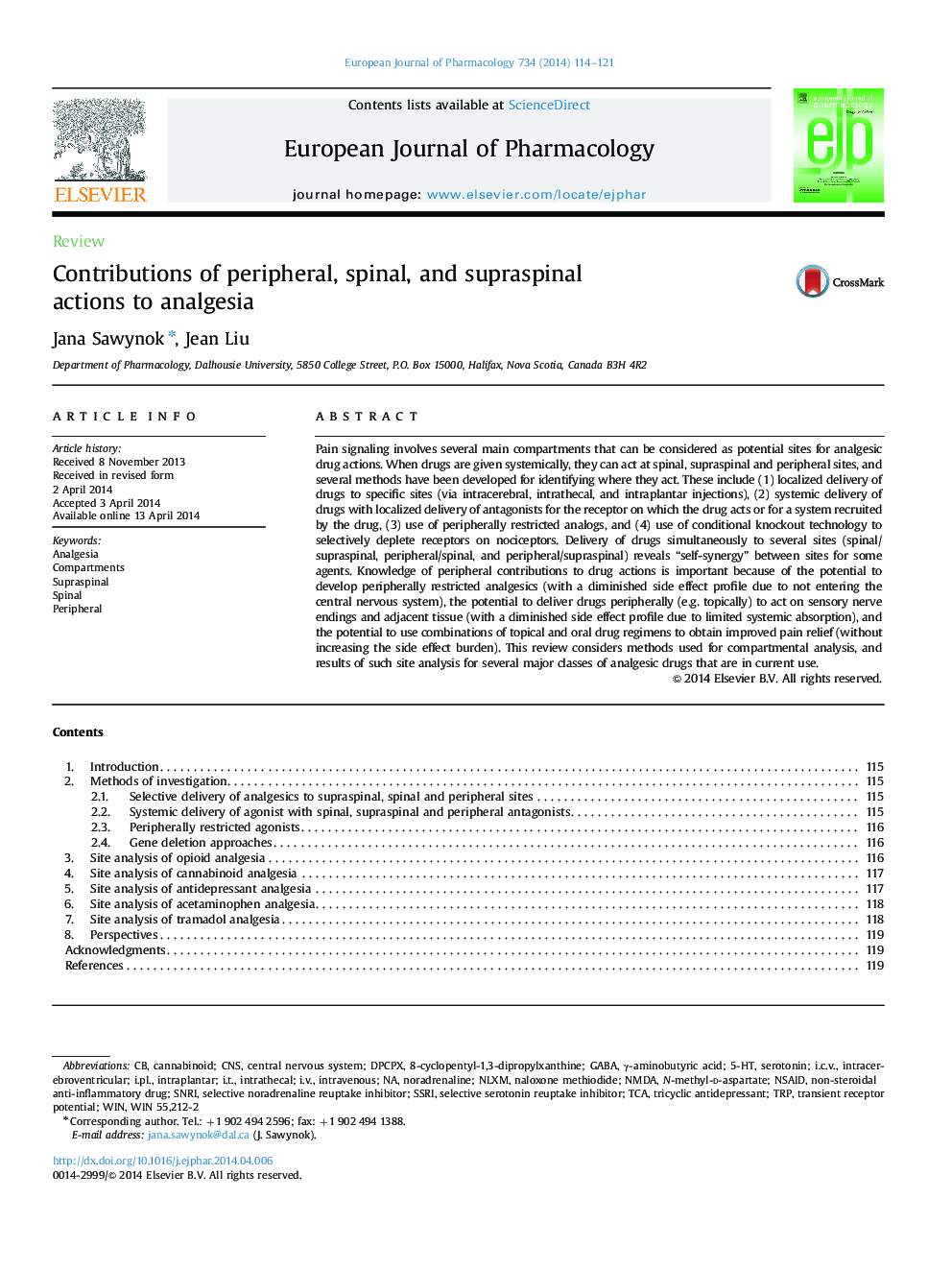| کد مقاله | کد نشریه | سال انتشار | مقاله انگلیسی | نسخه تمام متن |
|---|---|---|---|---|
| 2531755 | 1558947 | 2014 | 8 صفحه PDF | دانلود رایگان |
Pain signaling involves several main compartments that can be considered as potential sites for analgesic drug actions. When drugs are given systemically, they can act at spinal, supraspinal and peripheral sites, and several methods have been developed for identifying where they act. These include (1) localized delivery of drugs to specific sites (via intracerebral, intrathecal, and intraplantar injections), (2) systemic delivery of drugs with localized delivery of antagonists for the receptor on which the drug acts or for a system recruited by the drug, (3) use of peripherally restricted analogs, and (4) use of conditional knockout technology to selectively deplete receptors on nociceptors. Delivery of drugs simultaneously to several sites (spinal/supraspinal, peripheral/spinal, and peripheral/supraspinal) reveals “self-synergy” between sites for some agents. Knowledge of peripheral contributions to drug actions is important because of the potential to develop peripherally restricted analgesics (with a diminished side effect profile due to not entering the central nervous system), the potential to deliver drugs peripherally (e.g. topically) to act on sensory nerve endings and adjacent tissue (with a diminished side effect profile due to limited systemic absorption), and the potential to use combinations of topical and oral drug regimens to obtain improved pain relief (without increasing the side effect burden). This review considers methods used for compartmental analysis, and results of such site analysis for several major classes of analgesic drugs that are in current use.
Journal: European Journal of Pharmacology - Volume 734, 5 July 2014, Pages 114–121
